#1550s miniature
Explore tagged Tumblr posts
Text

Miniature, ca. 1558, French.
Portraying Mary Queen of Scots in a pink dress.
By François Clouet
#françois clouet#womenswear#extant garments#dress#mary queen of scots#16th century#1558#1550s#1550s miniature#miniature#1550s dress#royal collection trust#pink#France#1550s France
36 notes
·
View notes
Text
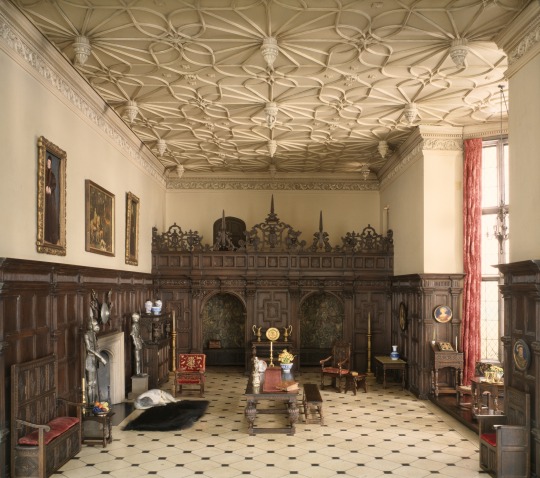
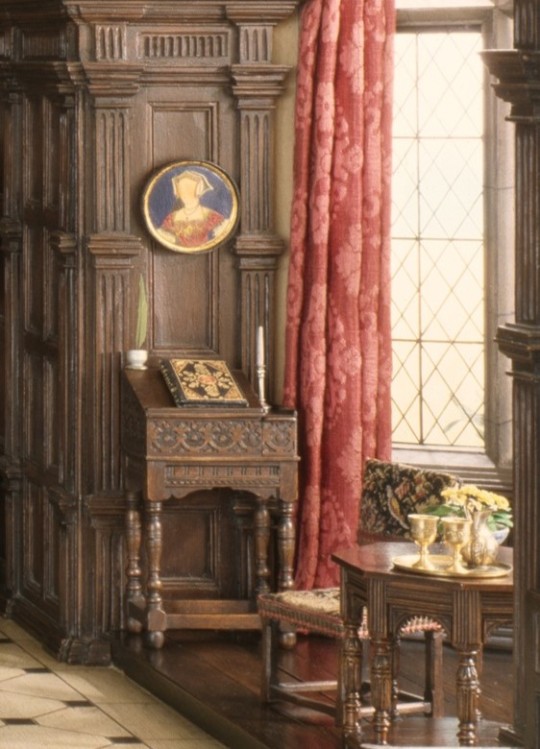

Miniature English Great Room of the Late Tudor Period, 1550-1603
Narcissa Niblack Thorne & Unknown Artisans
c.1937
Art Institute of Chicago (Reference Number: 1941.1186)
#miniature#miniature art#art history#architecture#interior design#tudor era#16th century#english#united kingdom#up close#thorne rooms#art institute of chicago#one of my favorite bits of the art institute#knew y'all would want to see the dog
607 notes
·
View notes
Note

Do you think the new portrait is Mary I?
I think it's certainly possible it is Mary I. I have in past voiced strongly that it bears a much stronger resemblance to Mary I than to Catherine Parr. Mary wins over in features. Against Parr.
However, if we look at images that I think could be Catherine Howard-then I am undecided if it is Mary indeed.
But unless we have multiple confirmed images of Catherine Howard, it is impossible to tell definitely which one it is.
(The miniature in RCT with a 'consort pendant' is Anne of Cleves. I think I proved that enough on this blog. Hence we have zero of confirmed Howard this far.)
Until we do have such an option I am happy to call it Mary I instead of Catherine Parr. I am glad they changed it, I am hoping in future they will rename alleged Mary Howard's miniature(which has Parr's features through and through).
Unfortunately, I am skeptical of the dating of this miniature and thus the attribution to Susanna Horenbout.
Certainly, the records of the cross that matches are a good sign. Unfortunately, it's not as big evidence as they think it is.
Portraying delicate pieces of jewelry on miniatures was very difficult and not always does it do justice. (For example- the IHS brooch on Catherine of Aragon's miniature is nearly unrecognizable. It is the same Jane Seymour wears in her portrait by Holbein.)
In this case, however the jewel is clearly visible and should be fairly recognizable. So, why do they mention Mary wearing a clearly different cross in the NPG miniature by Lucas Horenbout?
It is not making their case stronger at all.
Religious jewelry was popular. Crosses with pearls and diamonds were common. So, how can you be sure it is the exact one you think it is?
-Realistically I don't think you can. It's not unique enough to be a good indicator.(There are only so many variations of cross-shaped jewelry you can make! Normal cross typically fits 5 to 6 gemstones across centuries, and up to 3 hunting pearls-a common part of jewelry in the Tudor era.)
So crosses matching the same description could be multiple within the royal family(and in the royal collection to which mary had access to), maybe even in Mary's own possession prior to 1546.
Hence yes it is a point for Mary, but it is not a strong point.
Certainly not the thing you can base dating solely on.
While the French hood's shape, nor partlet are not that far off from 1546, the way to date French hood in the 1540s is by looking at the hair.
And it is pretty simple.
Early you start with straight hair, closely fallowing head, not sticking out at all(Anne of Cleves-alleged miniature of Howard)
Then in c.1540-1543, we start to see hint of buns(slightly starting to poke out), but also simultaneously first slightly curly/wavy examples, still closely fallowing head, and it is pretty rare for them to stick out.
Parr in c.1543 juggles both hairstyles, but it sems curly/wavy was temporarily her preferred style, but it sticks out way more.
In 1544 Mary's portrait-curly hair.
But Parr in c.1545 has two straight buns down-returning to it-but again, it is more pulled out. Elizabeth in c.1546 has hair straight in two buns down. Margaret Douglas(possibly) in c.1546 has two straight buns down.
And c.1547/8 examples of Mary and Elizabeth show both buns up(the style then extends to 1550s-is typical for them, but starts in late 1540s)
So there is a clear pattern. Which art historians are yet to discover.
And they don't have it easy. Because, the official dating of 1540s, and 1550s portraits is nightmare. Most recent(before this) portrait to be misdated was the Jersey portrait of Parr. It was officially dated as 1547-1548.
Solely because she wears black-she must be a widow! (sarcasm.) Yeah, maybe in Victorian times. This is the Tudor Queen. She can wear black normally. No case for that date whatsoever!
-No, Parr's portrait is c.1544, it matches Mary's 1544 portrait so much! Except for the stays.
With so many examples of inaccurate dating between 1540-1560, it is no wonder historians then make wrong assumptions, based upon them.
Ooops-got bit sidetracked.
Mary's miniature imo is from early 1540s, c.1540-1542.
Hair is closely fallowing head, not sticking out at all nor any hint of buns, only slightly wavy. So almost same as in 1530s.
It's not consistent with any of the hairstyles seen in Parr's reign, but rather with Holbein's late work. He died in 1543.
It is basically the french hood and hairstyle from image on right

-just in different angle and with different billements, and bit more spread partlet(not by much though-it is wider at Parr's reign).
Maybe like this you will be able to better see the french hood's similiarity.

(the piece behind ear often gets later altered(overpainted).)
So with dating of 1540-1542. I am sorry, but Lucas Horenbout is still in the picture. He died in 1544. But that doesn't mean it should be just broadly atributed to 'workshop of Horenbout family'. His father seems to be not working by this point. His wife possibly was artist, but unlikely to have that similiar style to Lucas.
Since this is strongly Horenbout style...it should be one of the siblings.
But I think there is nothing wrong in attributing it to both siblings in case of ambiguity.
Hence I would label it as:
Miniature portrait of Queen Mary I as Princess, in c.1540-1542, by Lucas or Susanna Horenbout

Until proven otherwise.
15 notes
·
View notes
Text

"This is the second of two volumes that explores the world of faience figurines in Egypt and the adjacent areas of the Levant and Nubia during the Middle Bronze Age (2100-1550 BC).
Its companion volume is titled Miniature Forms as Transformative Thresholds (BMPES 7). This volume serves as a catalogue raisonné for faience figurines and provides a detailed analysis and description of over 1150 pieces along with their archaeological and museological contexts. The volume is accompanied by numerous drawings, photos, cards, archival material, graphs, tables, maps, and plans.
The research is primarily based on material coming from documented archaeological contexts, with two main unpublished cores from Lisht and Byblos, but also includes material from more than 150 sites.
The museological research focuses on three main collections: the Petrie Museum, the British Museum, and the Musée du Louvre, but also encompasses a total of 35 different museums in 33 different cities across Europe, Northern Africa, Western Asia, Russia, and the USA, as well as private collections and public auctions.
The volume covers not only faience figurines, but also provides a comprehensive study of the material dimension and culture of the late Middle Kingdom (1850-1650 BC), encompassing a diverse range of object groups, including a large corpus of pottery and stone vessels, as well as information on the people and society from that period."
— Faience Figurines in their Archaeological and Museological Contexts (Egypt, Nubia, and the Levant, 2100-1550 BC): The Catalogue Raisonné: Volume 19 (British Museum Publications on Egypt and Sudan), by Gianluca Miniaci
13 notes
·
View notes
Text
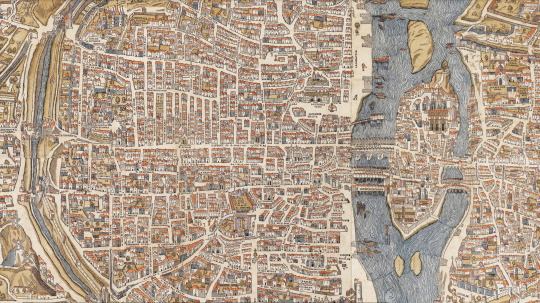
(plan de Truschet et Hoyau, dit plan de Bâle, vers 1550, détail)
petite géographie poétique des villes, les perspectives des rues
il y a des rues qui partent du coeur intime des villes pour rejoindre leur extérieur lumineux et qui dans un même élan le dévoile au regard ; elles semblent quitter la ville plus que d’autres, aller au-delà d’elles-mêmes, pour préparer en secret un horizon miniature qui finit par déclencher le désir d’en atteindre la légende ; d’autres inversement qui ferment l’espace aimé, qui le replie sur lui-même, qui semble protéger le regard de toute attaque extérieure, qui transmettent le centre à tout notre être, qui nous diluent dans son plan bienveillant pour que nous devenons centre nous-mêmes
© Pierre Cressant
(mardi 4 octobre 2022)
#poésie en prose#poésie#poètes sur tumblr#poème#poème en prose#prose poétique#poètes français#french poetry#poésie contemporaine#poètes français#petite géographie poétique des villes#petite géographie poétique de Paris#urbanisme poétique#plan des villes#ville#paris#truschet et hoyau#1550s#1550#paris1550
18 notes
·
View notes
Text

Miniature of a lioness attacking an antelope under a tree
Ottoman Turkey ca. 1501-1550 AD
British Museum
12 notes
·
View notes
Text

This post is about a lady from the sixteenth century called Amy Robsart and this small portrait may be of her. It is known as The Beaufort Miniature, because it was part of collection which belonged to the Duke of Beaufort until it was auctioned in 1983, and is thought to be by Levina Teerlinc, a **female** miniature painter (wow!) However, according to this blog the miniature may also be of one of my favourite historical figures, Lady Jane Grey.
Amy Robsart became Lady Amy Dudley when, in 1550, she married Robert Dudley, Earl of Leicester, who is thought to have been a true love of Queen Elizabeth I. Sadly, Amy is primarily known for her fall down a flight of stairs in which she died, the circumstances of which have always been considered as suspicious. It was recorded as an accident, but it could have been suicide, or, she could have been pushed.
Acc. to good ole Wikipedia, the miniature belonged to the descendants of Lettice Knollys, Dudley's second wife. (There is no further info that I can find that links their family with the Duke of Beaufort).
Amy died in 1560, yet Dudley did not remarry until 1578. Was he waiting to see of Elizabeth would change her mind and marry him? When he did eventually marry again, his new wife was banished from court, reputedly due to Elizabeth's jealousy.
Info here about Levina Teerlinc from a blog I've just found called 'The History Jar' written by a published author called Julia A Hickey. I haven't had chance to read through it yet, am currently busy with other matters, but it's on the 'To Explore' list!
0 notes
Text

Nature Printing with a 6 yr Old
In today’s Nature Printing class we looked at the art of Ebru- a technique developed in the Muslim world possibly in collaboration with Chinese origins during the era of the Silk Road. The word ebru (cloud, cloudy) or abru (water face) is the technique of paper marbling in Turkish.

Around the end of 16th century, tradesmen, diplomats and travellers coming to Anatolia brought this art to Europe and after the 1550s, booklovers prized ebru which came to be known as “Turkish Paper” or “Turkish marbled paper making”. In the subsequent centuries of modern times, it was widely used in Italy, Germany, France and England. The papers are called kagaz-e-arabi (South Asia), the floating ink technique is known as Suminagashi (Japan).

The Progress of the Marbling Art from Technical Scientific Principles (1894). Source

Deccan Miniature, mid 17th Century (Sotheby’s)

beauty as a monkey trainer / harunobu / 1724 – 1770. Source
Our class
Alice's art on rice paper:

We also tried the anaglyph effect with the marbled patterns.

Anaglyph is a method of superimposing a pair of pictures and looking at them through chromatically contrasting filters- usually red and cyan. Anaglyphs are used to create stereoscopic 3D imagery and is often used in films and studying hurricanes and smoke plumes. (JPL/NASA)
We didn’t get to superimpose the images but used red and blue inks- we saw that each filter obscured elements with the same colour and did the opposite to the other.


This is something I have experimented with my animated nature prints:

0 notes
Text

Sofonisba Anguissola (c.1531-1625), Self portrait miniature attributed to Anguissola, c.1550-1620 © Victoria and Albert Museum
0 notes
Photo








What did Ancient Egypt's Pharaohs Stash Inside the Pyramids?
Did the pharaohs have lavish grave goods and treasure?
When British archaeologist Howard Carter cracked open King Tutankhamun's tomb in 1922, he reported seeing "wonderful things." Tut's tomb was filled with extraordinary treasures, including the golden death mask of Tutankhamun, a golden throne and even gold sandals. But did all royal tombs in ancient Egypt have such plush grave goods?
The answer is no. While the Great Pyramid of Giza and other ancient Egyptian pyramids are incredible monuments, the burial goods inside them were likely relatively modest compared with those buried in the tombs of later pharaohs, such as Tutankhamun.
"The burials in the biggest pyramids might have looked quite simple in comparison to Tutankhamun," Wolfram Grajetzki, an honorary senior research fellow at University College London in the U.K. who has studied and written extensively about ancient Egyptian burial customs and burial goods, said in an email.
Pyramids were used as Egyptian pharaohs' tombs from the time of Djoser (reign circa 2630 B.C. to 2611 B.C.) to Ahmose I (reign circa 1550 B.C. to 1525 B.C.). Most of these pyramids were plundered centuries ago, but a few royal tombs have remained relatively intact and provide clues about their treasures, Grajetzki said.
For instance, Princess Neferuptah (who lived around 1800 B.C.) was buried in a pyramid at the site of Hawara, around 60 miles (100 kilometers) south of Cairo. Her burial chamber was excavated in 1956 and "contained pottery, a set of coffins, some gilded personal adornments and a set of royal insignia that identify her with the Underworld god Osiris," Grajetzki said.
King Hor (who lived around 1750 B.C.) was buried with a similar set of objects, although he wasn't buried in a pyramid, Grajetzki said. "The body of [Hor] was wrapped in linen, the entrails placed into special containers, called canopic jars," Grajetzki said. "His face was covered with a mummy mask."
The tomb of Queen Hetepheres, the mother of Khufu (the pharaoh who built the Great Pyramid), is a bit more elaborate. Built at Giza, the tomb had a bed and two chairs that were decorated with gold, along with pottery and miniature copper tools, Grajetzki wrote in an article published in January 2008 in the magazine "Heritage of Egypt."
The substructure (the lower part) of the unfinished pyramid of King Sekhemkhet (circa 2611 B.C. to 2605 B.C.) was found unrobbed at Saqqara, Reg Clark, an Egyptologist who is author of the book "Securing Eternity: Ancient Egyptian Tomb Protection from Prehistory to the Pyramids" (American University in Cairo Press, 2019), told Live Science in an email. The king's sarcophagus was empty, but archaeologists did find "21 gold bracelets, a golden wand or sceptre and various other items of gold jewellery" in a corridor, Clark said. While these are impressive burial goods, they don't come close to the riches found in Tutankhamun's tomb.
The artifacts found in these royal burials suggest that pharaohs entombed in pyramids were probably buried with grave goods that were more modest than those found buried with Tutankhamun, Grajetzki noted. Unlike the early pharaohs, Tutankhamun's tomb was located in the Valley of the Kings — a remote valley near modern-day Luxor that was used as a royal burial site for over 500 years during the New Kingdom, according to Britannica.
"This does not mean that he [Khufu] was poorer [than Tutankhamun]. His pyramid proves the opposite. He was just buried following the customs of his day," Grajetzki wrote in the article.
Large treasures haven't been discovered in any of the known Egyptian pyramids. "There were no large 'treasures' in the pyramids, like in the tomb of Tut," Hans-Hubertus Münch, a scholar who has researched and written about ancient Egyptian burial finds, said in an email. In addition, no tomb containing vast amounts of lavish grave goods has been found dating to earlier times when pyramids were built, Münch said. He noted that during the New Kingdom (circa 1550 B.C. to 1070 B.C.), a time when pyramid building ended, the amount of lavish grave goods buried with royal and non-royal individuals increased.
During the New Kingdom, people, if they had the ability, tried to put large numbers of ornate objects in their tombs. "This enormous mass of objects in tombs is only an invention of the New Kingdom," Münch said. Why exactly they wanted to do this is not entirely clear.
Pyramid texts
While the burial goods inside the pyramids were modest compared with later ancient Egyptian tombs, some of the pyramids had lengthy hieroglyphic inscriptions on their walls, which scholars today call the "pyramid texts." The texts record a large number of "spells" (as Egyptologists call them) and rituals. The pyramid of Unis or Unas (reign circa 2353 B.C. to 2323 B.C.) was the first pyramid to have these texts on its interior walls, while the pyramid of Ibi (reign circa 2109 B.C. to 2107 B.C.) was the last known case, James Allen, an Egyptology professor at Brown University, wrote in the book "The Ancient Egyptian Pyramid Texts" (Society of Biblical Literature, 2005).
The function of the pyramid texts "was to enable the deceased to become an akh," a spirit that exists in the afterlife, Allen wrote. The spells aimed to reunite the "ka" and "ba" — parts of a person's soul that the Egyptians believed were separated at death.
The appearance of these texts "probably reflects a shift or innovation in the ancient Egyptians' ideas of the royal afterlife," Allen said. In earlier times, documents like the Pyramid Texts may have existed, but, for whatever reason, they started being written on the pyramid walls in the time of Unis.
By Owen Jarus.
#What did Ancient Egypt's Pharaohs Stash Inside the Pyramids?#Did the pharaohs have lavish grave goods and treasure?#the richest pharaohs#king tutankhamun#princess neferuptah#howard carter#archeology#archeolgst#history#history news#ancient history#ancient culture#ancient civilizations#ancient egypt#egyptian history#egyptian gods#treasure#gold#silver#valley of the kings
319 notes
·
View notes
Photo

Miniature Dagger, bronze, ivory and gold, 1700-1550 BCE
Excavated at Kerma from the tomb of a young boy, this dagger imitates the full-sized versions found in the nearby tombs of warriors.
From the temporary exhibit Nubia: Treasures of Ancient Africa formerly at the St. Louis Art Museum
62 notes
·
View notes
Text
5e Spell Components
So. For reasons known only to myself and possibly related to work-week-induced insanity, I decided to plug about 400 or so of the material components for spells in D&D 5e into an excel document, to sort them according to type (Biological, Mineral, Crafted, Elemental, Misc.), Subtype, Spell, School, and Cost. Because I’m apparently in the mood to randomly sort stuff?
The results were sort of interesting, if you’re in the sort of incredibly specific mood I am. A few avenues of analysis:
Component Breakdown by Type/Subtype:
If you want to know what sorts of materials are most commonly used for spells in D&D, for things like where you might buy/find them, etc. What I got with my rather rudimentary and inexpert classification system was as follows:
Biological: 128, of which Animal 63 (inc. Humanoid), Plant 45, Food 6, Incense/Unguents/Oils 14
Mineral: 118, of which Gemstones (inc. Powdered) 38, Metals (inc. Powdered/Filed/Dusts) 26, Rocks (inc. Sand/Dust/Stone) 18, Rare Earths (Phosphorus/Sulfur/Etc) 28, Misc (Niter, Salt, Soot, etc) 8
Crafted: 131, of which Artisanal/Holy (Art/Sculpture/Reliquaries/Etc) 61, Materials (Paper/Cloth/Leather/Etc) 19, Metals/Minerals (Coins/Wires/Beads/Glass/Etc) 27, Weapons 10, Misc (makeup, alcohol, spheres of gum arabic, etc.) 24
The rest are elemental (water, fire, smoke), random/case-specific (an object from the target plane, etc), or ones I didn’t know how to file (eg. sponge)
So, honestly, the two places you’re most likely to buy your spell ingredients are a jeweller (gems, metals, filed/dust metals, wires, glass, etc, probably some of the crafted objects) and your standard apothecary (animal/plant parts, rare earth materials, incense/oils/etc). After that you’re either looking for bog-standard gear (cloth, string, leather, dirt, twigs) or you’ll have to get adventurous (gilded skulls, grave dirt, reliquaries, personalised statuettes and model ziggurats might need specialist sellers and/or some personal application)
Components with Costs by School:
Just out of curiosity, I wanted to see which was the most expensive school of magic in terms of named figures. These are totals of all the mentioned costly components, as if you wanted one casting all the most expensive spells for your school:
Necromancy (37,350gp)
Conjuration (16,665gp)
Transmutation (10,525gp)
Abjuration (7,785gp)
Evocation (4,450gp)
Divination (2,025gp)
Illusion (1,550gp)
Enchantment (50gp)
So Necromancy is the most expensive school (all those resurrection spells), followed by Conjuration (all those summon spells) and Transmutation (more varied). Abjuration, Evocation, Divination and Illusion are sort of in the middle, with Illusion being pretty reasonable aside from really one spell (1500 of that 1550 is Simulacrum), but Enchantment is by far the cheapest school of magic (free, if you’re not counting Acquisitions Incorporated). So. If you’re a cheap bastard, guess you know what to go for?
(Sidenote: Mordenkainen, as a spell maker, somehow manages to have his stuff appear luxurious, with things like ivory portals and polished marble, while actually only have one named cost, for a miniature sword costing 250gp. I can’t decide if this feels incredibly fake or if the man was just had an excellent grasp of luxury on a budget)
Random Specifics That Jumped Out At Me:
There are seven spells that call for fur of some kind, and two of them want bat fur. I don’t know why, but that struck my as hilariously specific (see above regarding work-related-insanity?)
There are three spells that want tentacles, all for eldritch conjurations, and two of them specify pickled tentacles, while Evard’s Black Tentacles wants fresh
There are five spells that want a pinch of dust, and five spells that want dirt, though two are necromancy spells that specifically want grave dirt. There’s apparently a surprising amount of spellcasting you can do just by swiping a finger along a dirty mantlepiece
Diamond and ruby are easily the most popular gemstones for casting, followed by pearl, jade and agate. The spell Astral Projection gets points from me just for asking for a gem I’d never heard of before, Jacinth, which is apparently a type of reddish zircon
In terms of metals, powdered iron and powdered silver are very popular, particularly for Abjuration spells, which makes so much sense considering RL folklore
There are two spells that require copper coins, and both are so folklore/idiom driven. Two coins for the eyes for Gentle Repose, and a penny for your thoughts for Detect Thoughts. I love it
In Conclusion:
When frazzled I get an irrepressible urge to sort things, and you all get to suffer for it?
29 notes
·
View notes
Photo

Today is International Bath Day. There is an interesting story behind this miniature painting depicting a bathing scene.
Sheikh Shams al-Din Muhammad 'Assar Tabrizi was a poet and scholar in 14th century Persia. Inspired by the works of Nizami Ganjavi, a 12th century Persian poet who was considered the greatest romantic epic poet, Assar Tabrizi wrote Mihr wa Mushtari.
The relationship between the two protagonists, Mihr (son of Shahpur Shah) and Mushtari (son of Shapur Shah's Vizir), is spiritual and platonic, and their story unfolds from childhood through adulthood.
“In Persian mystical poetry, physical love is often a reflection of divine love, and the beauty of the beloved a reflection of God’s beauty. The beloved was just as often a man as a woman, and although love did not have to manifest itself physically, the sexual ambiguity of works like this was enough to awaken displeasure in more morally oriented circles….. this does not seem to have been the case between Mihr and Mushtari. In any event, Mihr marries Nahid, the daughter of the Khwarazm shah. The bathing scene is unusual. The text explains that Mihr, the central seated figure, is having a knot in his long hair combed out.” (from The David Collection.)
Mihr wa Mushtari (The David Collection, Copenhagen) Translation Title: The Sun and Jupiter c. 1540-1550 Shiraz, Fars, Iran Opaque watercolor and gold on paper 25 × 20 cm Persian Islamic Safavid Repository: The David Collection, Copenhagen, København, Denmark HOLLIS Number: 8001380089
#internationalbathday#bathing#Islamic Art#mihrwamushtari#persianpoetry#assartabrizi#harvardfineartslibrary#harvardfineartslib#fineartslibrary#Harvard#harvard library#HarvardLibrary
20 notes
·
View notes
Note
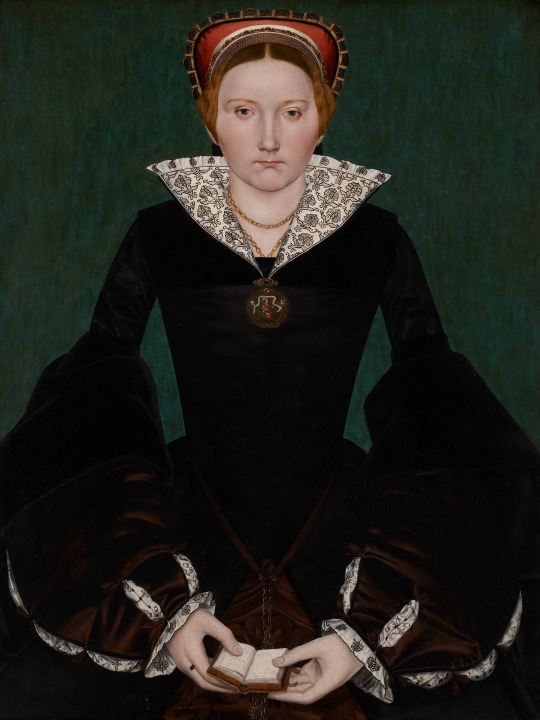
Do you think this could be a portrait of Mary I? I see a strong resemblance to other portraits of Mary and I believe the hood might be identical to the one in the Fitzwilliam portrait by Hans Eworth. The lady in the Fitzwilliam portrait has a much thinner face, but we need to keep in mind that Mary was frequently ill and her weight fluctuated (Venetian ambassador Giovanni Michieli once commented that "the Queen's face has lost flesh greatly since I was last with her [two months earlier]")
This painting is Minneapolis Institute of Art, as Unknown woman from c.1550(imo it's earlier than that, mid to late 1540s).
According to them it is by unknown artist, imo it's early workshop of Eworth. Workshops are harder to artribute to. It's the time when Eworth's work should be at its best. Far better quality than later in Mary I's reign. Possibly due to Holbein's pupils working as part of this workshop, or it is by one of Holbein's fallowers of pretty good skill(John Bettes the Elder comes to mind).
The jewelry and embroidery is consistant with nobility of the time, i see no jewel known to be part of royal collection or worn by Mary.
Billements on french hood included. Similiar shape of hood, is not same as identical hood. (FitzWilliam portrait has solid golden billements, this one doesn't. FitzWilliam shows more of coif? white around ear, consistent with later style.)
I have read somewhere in past that pattern of embroidery in this portrait could point to it being member of certain noble family-because it resembles their coat of arms, but i can't remember which. So I can say if it is correct.
In closeup more details can be observed:
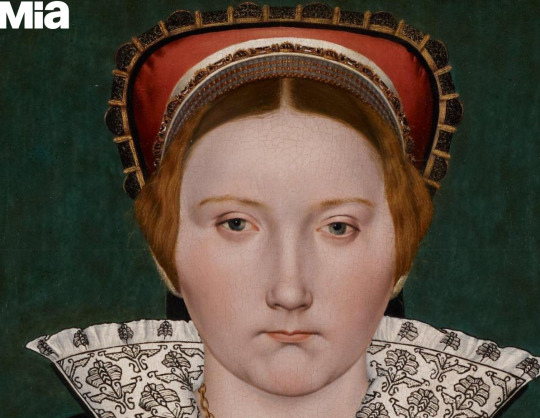
Particularly interesting is that the shape of french hood and way hair are styled(down) is not consistent with any other known depiction. It is transitional style. Probably one of first few appearances of this shape of french hood(being this flat). Imo it could be as early as mid 1540s. But more likely it is 2nd half of 1540s, worn by somebody who didn't wish to let go of older styling of the hair. I'd still though lean towards 1546 rather than 1549, if you catch my drift.
Another things to note is the hair are dark strawberry blond and the brows are visible. Very common issue for woman with red or reddish hair, is that they have too light brows and they appear invisible.
Mary had nearly invisible brows in portraits during her reign and in FitzWilliam portrait(towards end of Edward's reign).
But since this is likely at end of Henry VIII's or early into Edward VI's reign, it is possible this detail doesn't prove it is Mary. Because this can change with age and due to artist. Catherine of Aragon in several depictions had visible brows, very similiar to this shade. In others she had no visible brows. A miniature earlier from Mary's life shows no visible brows, but you can't trust miniatures that much about this.
Mary for most of her life, tended to not be skinny, so at that age I'd expect this roundness of the face.(But as you said, during reign of Edward and later as Queen, her weight was bit of havoc due to illnesses.)
Eyes in the portrait are grey,(max grey-blue or hazel), which is consistant with Mary's portraiture. The nostrils are very alike Mary's, nosetip similiar to some depictions. Similiar shape of mouth.
There is indeed great deal of resemblence.

Yet somehow, it doesn't look like her to me. Something is off.
Could be different artist taking on the same features, workshops can have drastically different depictions of same person.
I cannot rule out it is Mary and that might be sometimes as far as you get when you try to identify portrait.
However the similiarities in face could be there also due to family resemblence.
More i look into historical portraits, more i am convinced Mary I took way more after Henry VIII's side of family than we're lead to believe So did Elizabeth, and presumably lots of their cousins.
Bear in mind Elizabeth of Woodville's sisters married into many prominent noble families, so we're not talking just Greys or children of York princesses. But way more many cousins, you don't think of as related to Mary.
Since Henry VII and Richard III looked very alike despite being only distant cousins, we cannot rule out descendants of Woodvilles and Tudors looked alike.
(+Parr's features were way more similiar to Mary's then we realise. But frankly, this is not sumptuous enough for Parr as Queen.)
(The resemblence can be also random. But that is worst case scenario for us.)
Another thing(and often overlooked detail in portraits) are the hands:
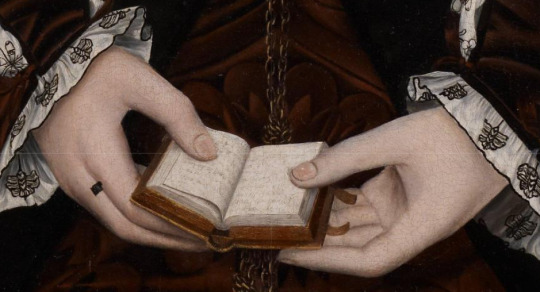
I mean they could be painted out, but have you ever seen Mary I without single ring? I haven't.(That black dot looks like abrasion to me, not a ring.)
I think it is the mouth which doesn't fit to me. Mary's mouth is not usually this narrow this late into her age(as child it was). Could be smiling vs no smile, but just as her mother in portraits Mary tended to smile. Always rather broad smile.
Here the face has different feel. Different set of emotions. Different personality I'd say.

You know sometimes it can be hard to tell these two apart:
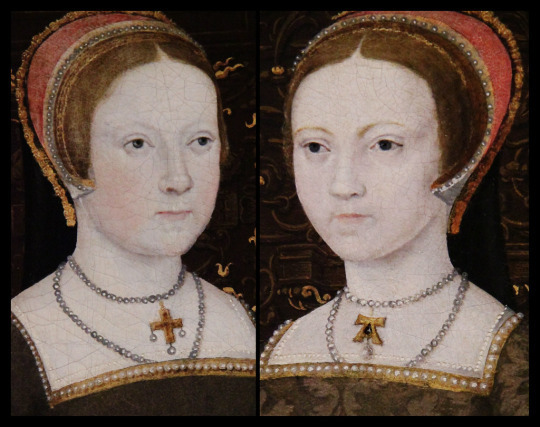
Elizabeth had hazel eyes, not brown-hence hers can look grey in portraits. She had strawberry blond hair(at times more to light red.) Features very alike to Mary's.
(Although seeing Mary's nose here, you could argue the person has exact same nose(nostrils especially look same).)
Tbh I don't know who that woman is. Could be Mary, there is enough resemblence to say possibly it could be her. However I don't think it is prudent to focus on her solely. There are other posibilities and at this moment we won't figure this out. There is not enough to go with.
What would help would be some clue in the outfit or period record describing it as certain sitter. This was my quick dive into this, I might do deeper dive into it in future.
21 notes
·
View notes
Photo

Miniature from a copy of Assar Tabrizi’s Mihr wa Mushtari. ‘Mihr in a Bath House in Khwarazm’ Iran, Shiraz, c. 1540-1550 The David Collection, Inv. no. 76/2006
The painting on this leaf depicts an unusual bathing scene, in which the protagonist Mihr, the central seated figure, has a knot in his long hair combed out, flanked by attendants on either side.
2 notes
·
View notes
Photo
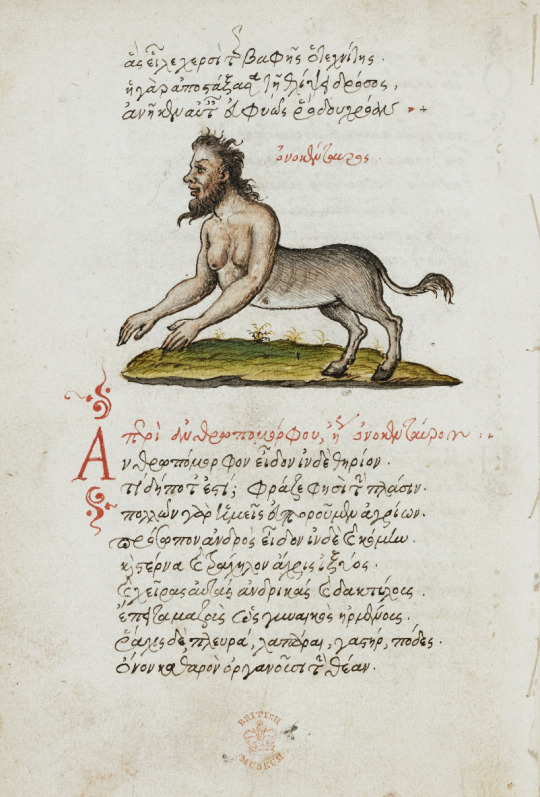
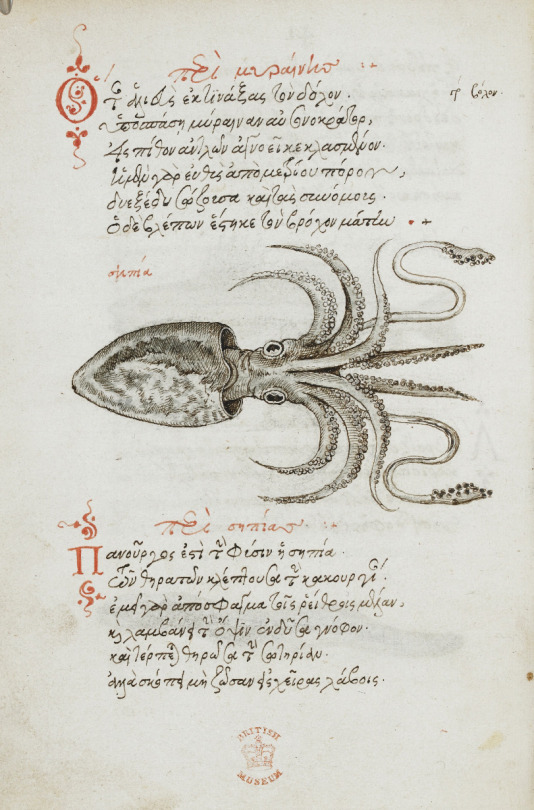
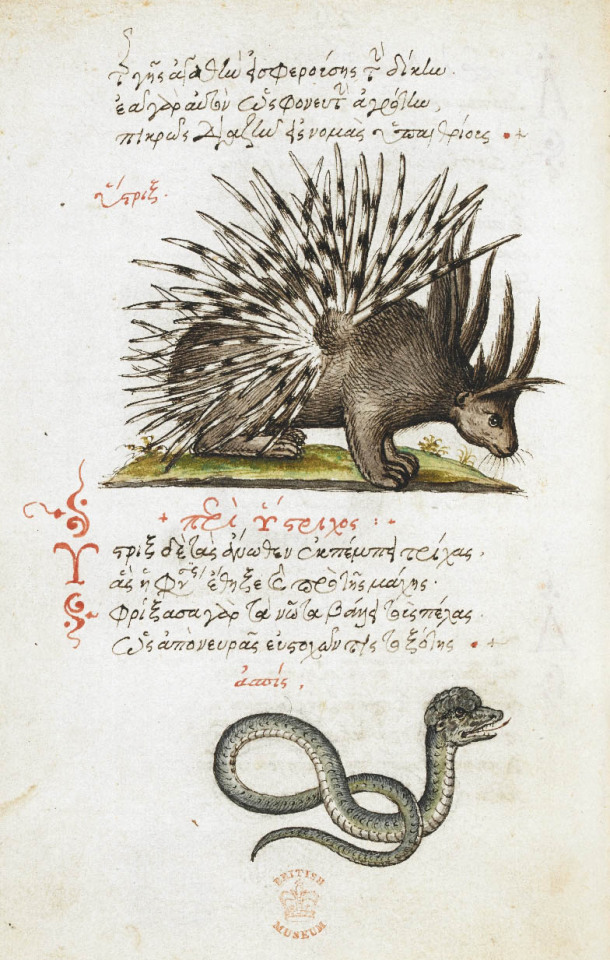
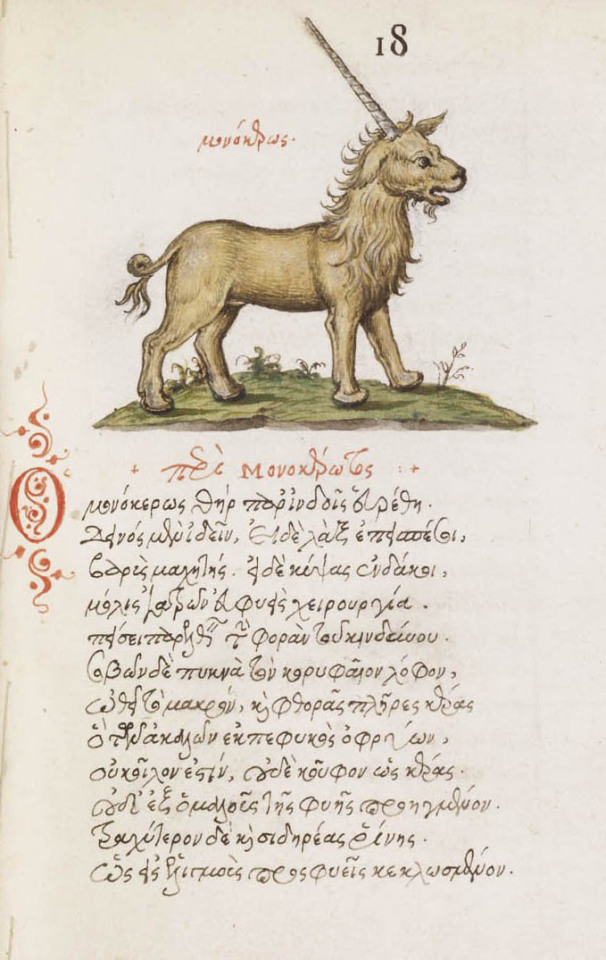
1.Miniature of a centaur, 2. Miniature of a cuttle-fish, 3. Miniature of a porcupine, 4. Miniature of a unicorn.
From “De natura animalium”, c. 1550-1569.
•
Follow for more: Instagram | Pinterest
#De natura animalium#1500s art#1500s#16th century#zoology#manuscript#illuminated manuscript#medieval illustration#renaissance art#cuttle-fish#unicorn#centaur#porcupine#animals
292 notes
·
View notes